by Texas Homesteader ~
A popular garden planting strategy often attributed to the native American Indians is the 3-Sisters Garden. It’s a symbiotic planting strategy.
Three different vegetables are planted together, each one benefitting the other and themselves too for a strong crop. Come see why.
What Is A 3-Sister’s Garden?
Want to transform your garden into a flourishing oasis of productivity and sustainability? The 3-Sisters Garden planting strategy is a garden in which three vegetables were planted together to enhance soil health, reduce pests and maximize yield:
Corn
Pole Beans
Squash or Pumpkin
But they were planted for very specific reasons.
Each vegetable helps the other. And by helping each other, each vegetable also benefits by growing strong and producing a better crop.
What Do You Plant First In A 3-Sisters Garden?
An important food source for the Native American Indian was corn (or maize) and it was often planted to feed the tribe.
In a 3 sisters garden you first plant the corn because it grow tall. But corn is a heavy feeder of soil nutrients. Those nutrients needed to be replaced to help guarantee a bountiful harvest.
Pole Beans or Bush Beans in a 3 Sisters Garden?
The next thing to plant in a 3-sister’s Garden is beans. Because beans are a legume they pull nitrogen from the air and bring it to the soil to help nourish the corn.
You’ll want pole beans that grow in a vine instead of bush beans. So plant pole beans next to the corn. The corn offers a sturdy stalk to support the bean vine.
Benefit of Planting Squash In A 3-Sisters Garden
Squash was also planted as part of the 3-sisters garden.
The squash benefits from the nitrogen offered by the beans, and the dappled shade offered by the corn.
And the large squash leaves cover the ground to act as a living mulch to benefit the corn and beans.
The large leaves and ground cover of the large squash leaves on the vine shaded the soil, helping to keep weeds from growing which would steal soil nutrients needed by the crop.
And since the ground is covered, the squash also helped preserve precious moisture in the soil by slowing evaporation.
And the prickly leaves help deter raccoons and other pests which don’t like to step on them.
How To Plant A 3-Sisters Garden
Here’s how to plant a 3 sisters garden.
When danger of frost has passed, it’s time to plant your 3 sisters garden.
Make A Mound – Make small mounds about 4 inches tall, 2-ft diameter and about 4 feet away from each other. In the center of each mound make a small well.
Plant The Corn First – The corn should be planted first so it has a chance to grow before planting the squash & beans. Plant 4 corn seeds in a square just outside the well and about 6″ apart.
Plant Bush Beans – When the corn grows 6″ tall, plant 4 bean seeds down the side of the mound and about 3″ away from each corn plant. Then give the beans 2-3 weeks to grow before planting the squash.
Plant The Squash or Pumpkin – When the beans are growing well plant 2 squash or pumpkin – one on opposite sides of the mound and about 24″ or so from the center.
When all these vegetables are growing, the corn has a head start so it grows tall. The tall corn gives the bush beans a pole to grow upon. The beans also provide nitrogen for the hungry corn plants. And the squash or pumpkin shades the ground, moderating soil temperatures and preserving moisture for the 3 sisters garden.
I often plant a 3-sisters garden. I love the symbiotic relationship of the 3 crops as they work to benefit each other and themselves too.
It’s the most basic example of companion planting.
~TxH~
My Favorite Garden Hacks
Garden Planning
- Easy Garden Planting Plan Spreadsheet
- Prepare Now! Late-Winter Garden Checklist
- How To Make Your Own Garden Soil
- Prepare Your Garden For Spring Planting
Seed Planting
- Planting Seeds In A Milk Jug Mini-Greenhouse
- Planting A Clear Tote As An Indoor Greenhouse
- Repurposed Cardboard Seed-Starting Pots
Soil Health
- Easy Compost For A Healthy Garden
- How Leaves Benefit Your Garden
- Using Manure In Your Compost & Garden
Garden Styles
- How & Why To Use Raised Beds In Your Garden
- 3-Sister’s Garden – The Original Companion Planting
- Planting A Large Galvanized Trough
- Where I Found The BEST Raised Bed!
- Planting A Blueberry Bush In Rustic Galvanized Tub
Garden Plants/Harvest
- Stevia – Growing Your Own Sweetener!
- My Simple, Zero-Waste Herb Drying Setup
- The Lazy Gardener’s Plant List – Plant Once, Eat For Years!
- How To Tell When Watermelon Is Ripe
- Luffa A Surprising Zucchini Substitute!
- How To Plant & Grow The Best Tomatoes
Water/Irrigation/Drought
- Keeping Potted Plants Watered
- Repurposing A Coffee Can For Deep-Soak Watering
- 3 Rainwater Collection Systems We Use
- Cheap (or FREE) Wood Mulch For The Garden
- Using Vining Plants For Living Mulch
- Surprising Use For Empty Clay Pots In The Garden
Weed Control
Garden Tips
- How To Save Outdoor Plants Even During A Hard Freeze
- Tricking Birds AWAY From Your Strawberry Plants
- Protecting Tender Seedlings From Wind
- Homestead Hack: Remember Where You Planted Seeds
- How I Use EcoBricks In The Garden
MORE Gardening Posts
References:
References: Farmer’s Almanac 3 Sisters Garden
Find Your 2023 Updated USDA Plant Hardiness Zone
Texas Master Gardener’s Companion Planting – Plant Friend & Foe
C’mon by & sit a spell! Come hang out at our Facebook Page. It’s like sitting in a front porch rocker with a glass of cold iced tea. Lots of good folks sharing! You can also follow along on Pinterest, on Twitter or on Instagram.
If you’d like to receive an email each time a new blog post goes live it’s EASY to
subscribe to our blog

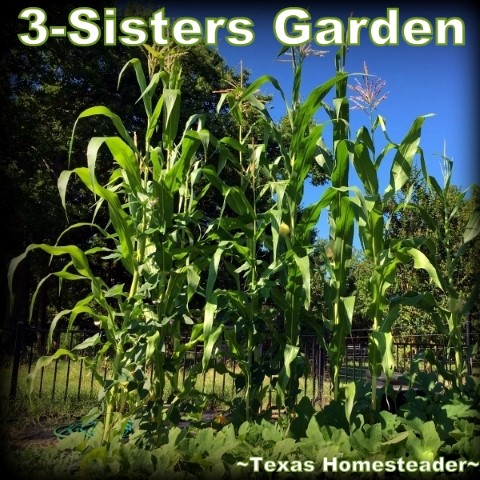
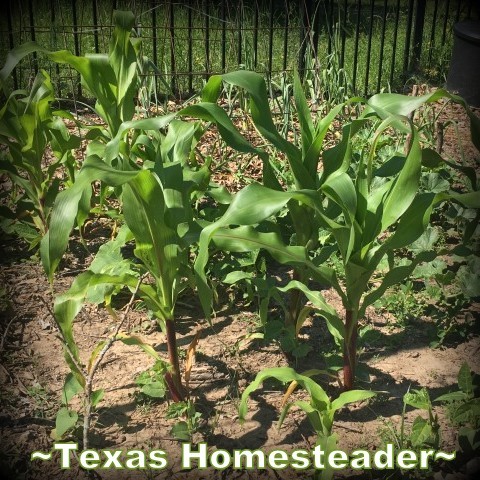
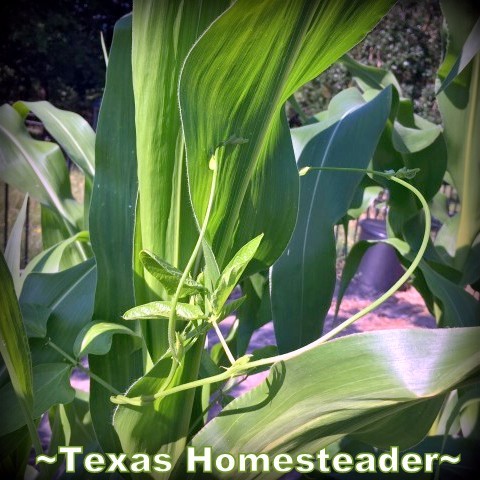

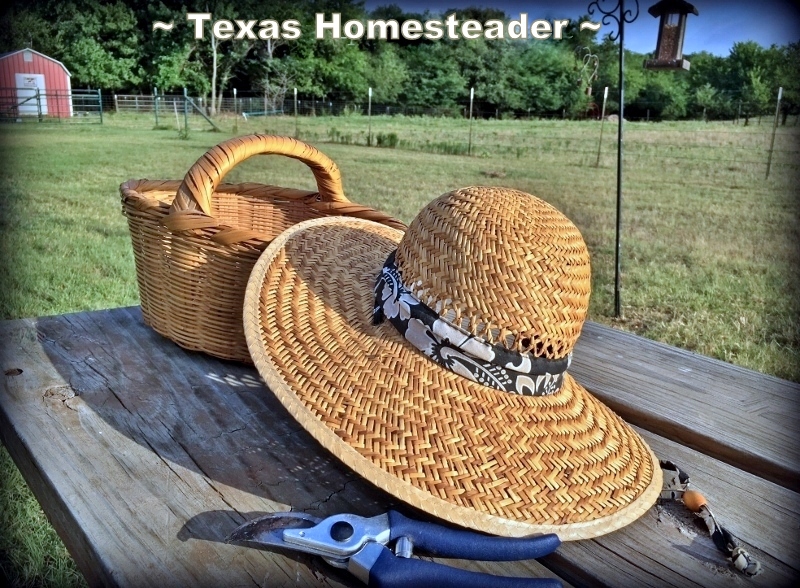

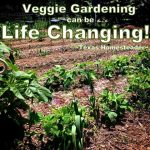

Hi Tammy,
In my more extensive gardening days I planted pole beans with corn, these days I don’t plant corn any more and my favorite beans to grow are the scarlet runner beans. The bird man who lives with me rigged up a tall, (10+/- foot) circular thing that just stays up year round for the beans to climb on. Each year when I plant them I give them lots of seasoned horse poop. They have beautiful scarlet (go figure) flowers and large bean pods and the beans are large, mostly a dark dark purple with pinkiish streaks in them. I’d love to send you some beans. As far as eating, they don’t taste much different than lots of other dry beans. but they are beautiful in bloom.
Candace, I’d never heard of scarlet runner beans. So I googled it – they really are pretty. And I read that lots of people use the vines/flowers decoratively too. Edible landscape at its finest! Love that your man built you a permanent display for them! 🙂 ~TxH~